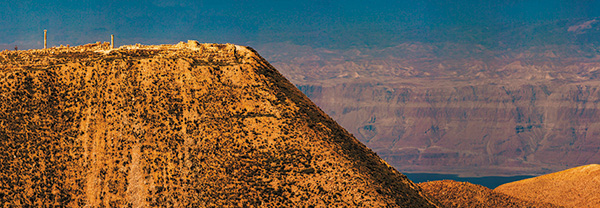Image Details

Courtesy of Győző Vörös
Perched on a precipice high above the Dead Sea, the remains of the royal palace-fortress of Machaerus with its two reconstructed columns glisten in the first rays of morning’s light. Located in present-day Jordan, Machaerus was part of the kingdom of Judea from the first century B.C. through the first century A.D. Originally constructed by Alexander Jannaeus in the Hasmonean period (c. 90 B.C.), the fortress was remodeled by Herod the Great (c. 30 B.C.). On the east side of the Dead Sea, Machaerus served an important strategic position. Not only did it have the ideal vantage point to see invasions coming from the east, but it was also in line of sight of the other Hasmonean—and later Herodian—citadels, so that it could signal the other fortresses if trouble loomed on the horizon.
With steep sides, the site is difficult to access: “A very rocky hill elevated to a very great height, which circumstance alone made it very hard to be subdued” is how Josephus described it. For this reason, it served as an ideal place for the Jewish rebels to take refuge during the First Jewish Revolt (c. 66–72 A.D.).
Looking westward beyond the citadel, the Dead Sea is visible in the background.
